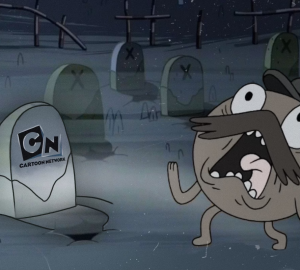The Rise and Effect of Toonami on the West
In recent years anime has become extremely mainstream. Shows like Naruto, Attack on Titan, and One Piece have become household names and media giants selling millions of dollars in merchandise and collaborating with some of the biggest brands out there. It’s almost inconceivable for some anime fans to think of a time when anime wasn’t popular. A time when you didn’t talk about it with friends at school but instead through message boards on the internet. A time when you couldn’t just stream and download your favorite anime but instead had to visit your local video rental shop, go to the tiny anime section in the back corner, and hope you find something that looks cool. There was a time when anime was completely underground and it was only talked about in public through hushed whispers. But that all changed with Toonami.
Anime had appeared on television in the West long before Toonami began. Anime like Astro Boy and Speed Racer were imported from Japan but they were gutted and remade to suit American audiences’ tastes. On the big screen, movies like Akira and My Neighbor Totoro were gradually opening Western audience’s eyes to the possibilities of Japanese animation. But cartoons were still seen as a lower class of entertainment and Japanese cartoons were even lower than that. Networks would air some of the raunchier and bloodier anime during midnight slots because they didn’t have anything to lose. The violence and sex might draw in a few more viewers but if they don’t then the ratings weren’t there anyway. Anime was simply seen as second-class entertainment before Toonami.
The love child of anime fans Sean Atkins and Jason DeMarco, Toonami first aired in 1997. Believe it or not, at the time it only had one anime in its lineup; Voltron; which was the version that was completely remodeled for the West. It started as a weekday afternoon block on Cartoon Network that aired Cartoon Network originals such as Thundercats and The Real Adventures of Johnny Quest. It wasn’t until 1999 that we began to see the Toonami that were more familiar with when it rebranded with the new host T.O.M. The very first program that they showed after the rebrand was Sailor Moon which showed the block’s new dedication to anime content. Also introduced was the Midnight Run which was a late-night block that showed the more mature anime that they couldn’t during the day such as Dragon Ball Z, The Big O, and Outlaw Star.
After another rebrand in 2000 (which had a whole cinematic story to explain it) a new T.O.M. was introduced. This was when fan-favorite voice actor Steve Blum came on board to voice T.O.M. and has been his voice for every subsequent version. After another revamp in 2003, the afternoon block of Toonami was moved to an evening slot starting at 7 PM in 2004. This was due to the content of the shows becoming increasingly more mature. Anime such as Zatch Bell, Naruto, Pokemon, One Piece, Yu Yu Hakusho, and Yu-Gi-Oh! were all introduced to kids for the first time through Toonami. Popular North American productions also premiered during this era of Toonami such as Teen Titans, Justice League Unlimited, and Megas XLR. Toonami also got its first and only original production, IGPX, during this time. Co-produced by two staples in Japanese animation, animation studio Production I.G. and distributor Bandai Entertainment, this showed that Toonami’s influence was spreading rapidly. However, this came to an end when Toonami was canceled in 2008 due to low ratings. After more than eleven years of broadcasting it seemed like Toonami was done for good. That was until a surprise April Fools appearance by T.O.M. lead to a viral online campaign to bring the block back to television and on May 28th, 2012 Toonami made its triumphant return and hasn’t left since.
For anime fans, the name Toonami is sacred and iconic. Poll any member of Gen Z whose into anime and most will tell you they were introduced to it by the late-night anime block. Toonami was television broadcasting done right. The creators had respect not just for the material but for the fans they were curating that material for. They wanted there to be a show for everyone, whether you were into heavy action or light comedy and slice of life. The block felt alive as if it was constantly evolving. Special events such as Big Robot Week brought in new genres of anime that viewers didn’t even know existed. The block was immersive and had storylines that viewers could follow and interact with. It introduced you to more than just new anime as music videos for Gorillaz’s “Clint Eastwood” and Daft Punk’s “Interstella 555” aired on the broadcast as well. The block was made by anime fans, for anime fans, and that passion and love for the art form is ever present to this day.






















